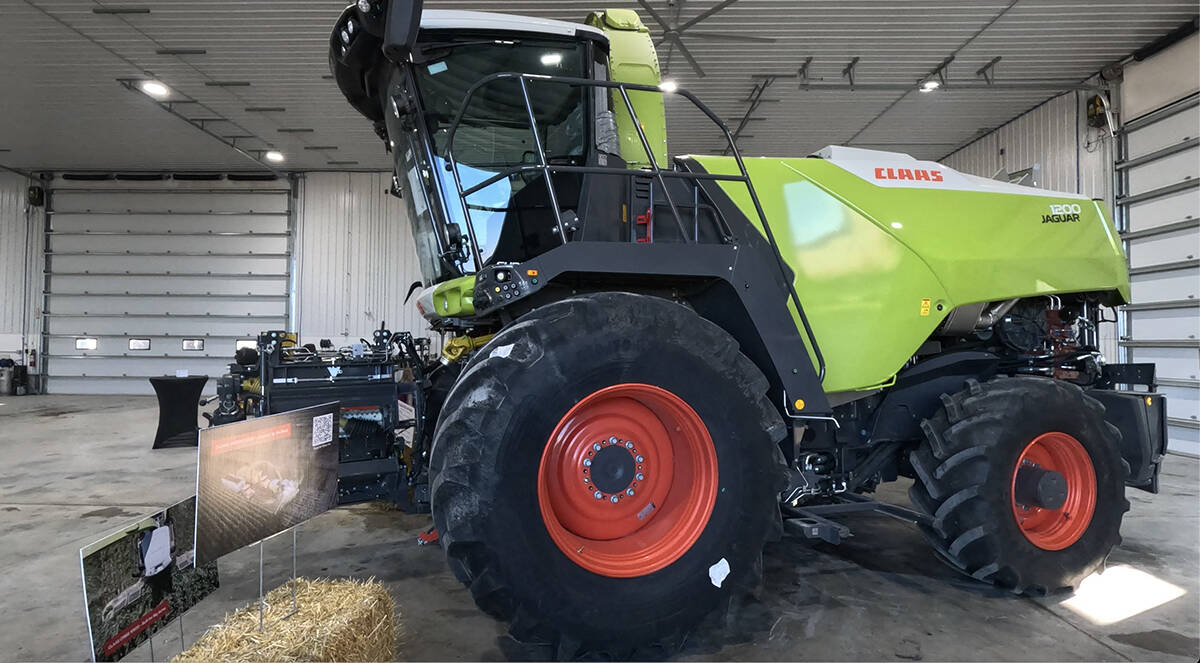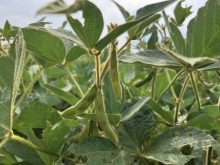Soybean aphids have been spotted in a few fields in southern Ontario that haven’t seen soybean aphids in quite a few years. As soybeans begin to enter R1, weekly scouting is advised, focusing first on the earlier planted fields close to or in R1, as well as any that have not had much rain and may be moisture stressed.
Soybean aphids start as colonies in a few pockets in the field before becoming overcrowded and spreading themselves out more evenly across the fields. These highly infested plants in pockets don’t indicate that threshold has been reached. Threshold has only been reached once 80 per cent of the plants have at least 250 aphids per plant and are increasing in numbers.
Beneficial insects are present in a lot of fields, thanks to the widespread cereal aphid infestations and should increase more with wheat and hay harvest starting or underway. Hot temperatures (30 C and higher) halt aphid reproduction and humid conditions help entomopathogens (insect killing fungus) develop. With any luck, while you are scouting, you might find aphid mummies – dead aphids that were parasitized by tiny wasps or infected by fungus.
Read Also

Claas brings 1000 Series SP forage harvesters to Canada
In mid-August, Claas unveiled its new line of Jaguar forage harvesters at an event in Visalia, California, deep in the heart of that state’s dairy region.
Other important beneficials include ladybugs (adults and larvae ), syrphid fly larvae or minute pirate bugs (adults or nymphs).
During R1 to R5 stage of soybeans, an insecticide application is only required once 80 per cent of the plants in the field have at least 250 aphids per plant and it is apparent that populations are increasing. This means scouting the field more than once. This threshold gives an approximate seven to 10-day lead time before the aphids would reach the economic injury level (~600 aphids per plant), where the cost of control is equal to yield loss.
Stressed, shorter beans can’t tolerate as many aphids, so don’t let populations go passed 500 aphids per plant on stressed beans.
If you need help to confirm whether an application is needed or if beneficials will keep up, use the Aphid Advisor App. It’s free and calculates the aphid growth potential using a seven day forecast for the location and the feeding potential of the beneficials you are seeing before recommending to spray or not. It also provides some pictures of what the important beneficials look like. Just one ladybeetle can eat up to 400 aphids, so help them out by not spraying before threshold is reached.
Visit the Crop Protection Hub for more information on foliar insecticides registered for soybean aphid control on soybeans. More information on soybean aphid biology, identification, and management can be found on CropIPM.
Tracey Baute is an entomologist with the Ontario Ministry of Agriculture, Food and Agribusiness. This article was published on Fieldcropnews.com














